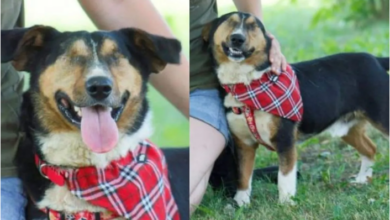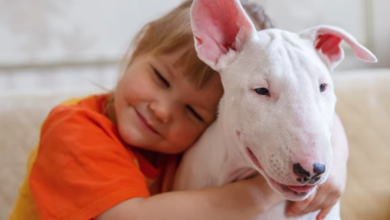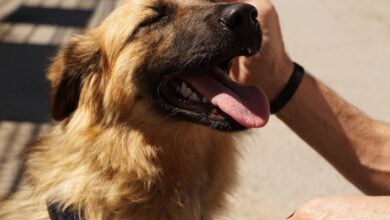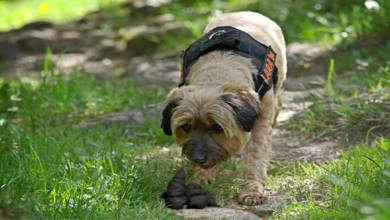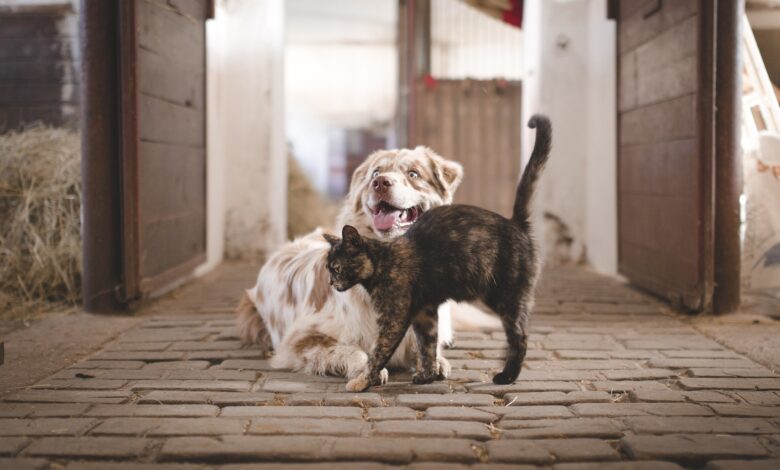
The relationship between dogs and cats, far from being controversial, can flow with great harmony if their characters are similar and we help them lay the foundations for a happy coexistence. Despite the popular saying of ‘getting along like a dog and a cat’, there are many specimens of both species that share good times of company and games with the other. However, although dogs and cats are sociable animals that seek to forge bonds and belong to a group, they are not always able to tolerate their habitat partner if they have not interacted socially as puppies or if their experiences have been negative. Therefore, we want to reveal the secrets to get a cat to accept a dog.
Things that influence the acceptance of the cat to the dog
It is curious how, on some occasions, a cat first accepts its new dog friend without much discussion while in other cases, despite all our efforts and precautions, they are barely tolerated, and there are several aspects that will tip the balance to one side or to the opposite. Do you want to meet them?
The degree of socialization of the cat
The first weeks of life are decisive in the learning of dogs and cats. If they have had to interact with other animals , of the same species or others and with people of different ages, this familiarizes them with new experiences. Thus, as adults they will show less resistance and will adapt better to this type of situation. The feline socialization stage takes place between the second and seventh week of life, while in dogs it does so between the third and twelfth. If you’ve just welcomed a kitten, you’ll need to expose it to social interaction to prevent behavioral issues later on.
Past experiences with other dogs
The experiences, traumatic or enriching, of the past exert a strong weight on the behavior of our pets, especially in that of kittens, since they are more sensitive and the associations last longer in their brain. If your cat has already lived with a dog and things did not go well because the dog chased it incessantly, frightened it with its barking or even bit it, it is understandable that the idea of meeting another dog does not fill it with joy at first.
The age of the pussycat and the dog
In general, young specimens are more receptive to interaction and new experiences, precisely because of that innate curiosity that accompanies weeks of socialization. The younger they are both, the more likely they will hit it off the first time and become good friends who will grow up together.
character compatibility
Temperament is an innate trait that conditions the smooth running of the relationship between a dog and a cat. For example, a playful and active dog will overwhelm and even stress an introverted cat. In general, regardless of the character of each specimen, felines display a more prudent, observant and controlling psychology than that of dogs.
The presentation between the dog and the cat
This is the most determining factor, along with the degree of socialization. Ethologists agree that it should be carried out gradually , without pressure, without forcing rapprochement and guaranteeing the integrity of both. For this reason, the dog must always be on a leash and, preferably, it must wear a muzzle so as not to hurt the cat. Each one must have an individual space for exclusive use in which they feel relaxed and safe. Felines appreciate having a shelter in the heights and that the sandbox is inaccessible to the dog. Each one should have their own feeder and drinker, since the competition for resources generates a lot of stress, especially for cats.
The needs of each
The basic needs of the animal welfare of both must be satisfied. Otherwise, they will not be balanced or predisposed to meet a new partner.
How to get a cat to accept a dog, our recommendations
As we say, cats are more territorial and controlling than dogs. Therefore, if you must introduce a dog to your cat as a new tenant, you should prioritize the reactions and rhythm of that dog. Dogs tend to be more tolerant and can learn basic obedience commands to keep the situation under control. Take note of the tips that we provide below to predispose your cat to accept your dog:
- Before the arrival of the dog, you must prepare the stays of both or if you prefer, you can allocate a restricted area just for the dog, for example, by placing a barrier. In this way, the veteran tenant, your cat, will not feel invaded or displaced and the dog will be able to familiarize himself little by little.
- When the dog comes home the cat should stay in his room. It is convenient to keep the distances a priori and that the dog is tied with the leash. If you can, tire him out with a long walk. This way, he won’t be as energetic and belligerent.
- A few days after the dog’s arrival you should start the olfactory exchanges, for example, exchanging their toys and blankets so that they get to know each other. At this point, synthetic pheromones can be of great help in reducing tension.
Physical contact and environmental enrichment
- Shortly after it will be the moment of the first visual contacts. The cat must have an escape route or a shelter to go to if he feels threatened or uncomfortable. Forcing him to remain against his will will only make the process more difficult and lengthen it over time.
- As they tolerate these visual contacts, you should prolong their duration. Of course, always under your supervision. When you must be absent, leave them each in their individual room so that they do not have access to each other and cannot fight.
- Every time they approach or show interest in their new partner, you should reward them equally. Positive reinforcement in the form of snacks , caresses or toys has great educational power, which in this case will help you break through stages and consolidate achievements. Don’t stop leaning on him.
- Environmental enrichment, both for the cat and for the dog, will favor their physical exercise and cognitive stimulation, both essential conditions for this mutual learning to come to fruition.
- If you notice that your kitten is stressed or behaves aggressively (hissing at him, growling at him, etc.) with the dog, you should postpone the approach and take him to his room to try it another time.
It is a process
Remember to proceed calmly, treating both equally and without pressure. Each animal has its rhythm and the approach will occur, have no doubt about it. However, although in most cases the outcome is happy, it may happen that they do not get along. If you notice that this is your case, you should consult a veterinary ethologist.


